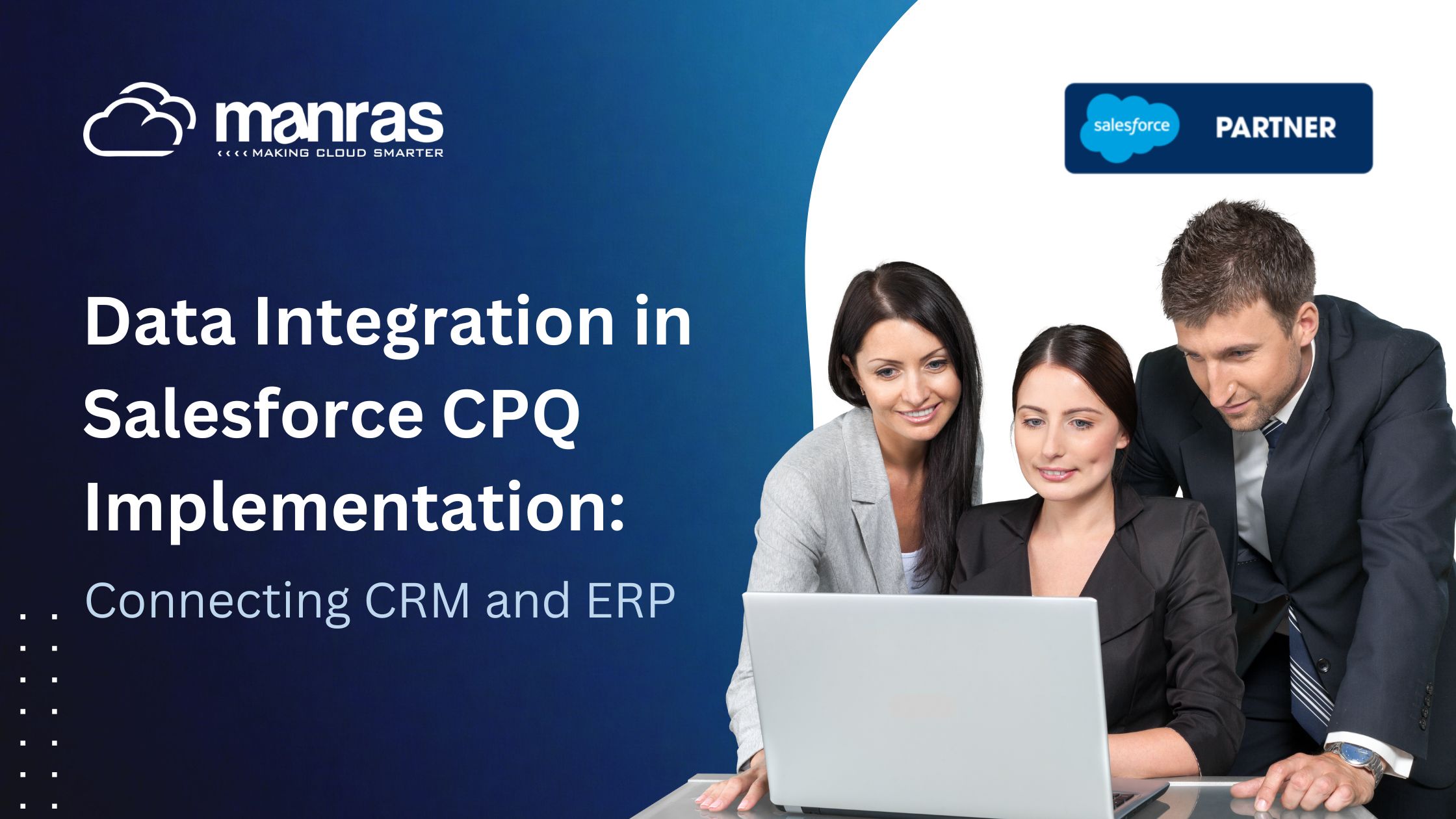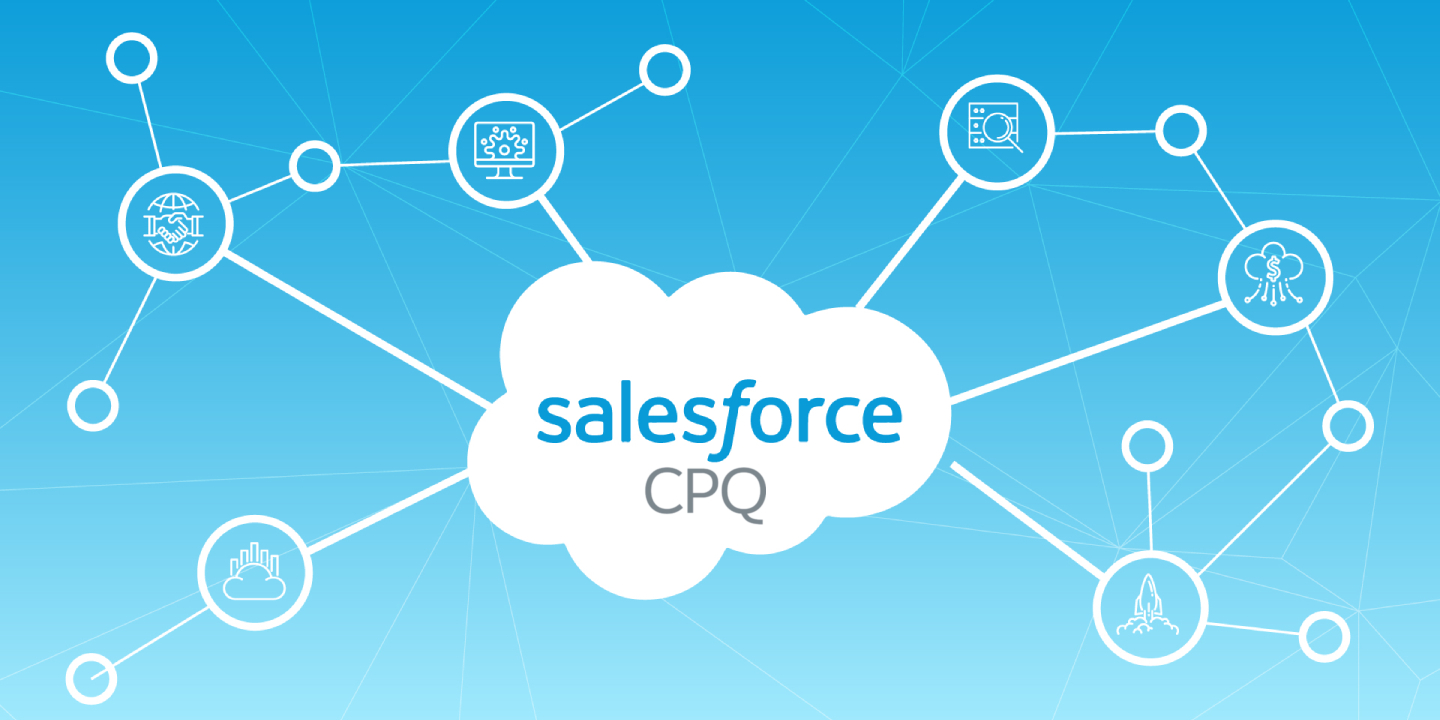
Data Integration in Salesforce CPQ Implementation: Connecting CRM and ERP
In today’s rapidly evolving business landscape, seamless data integration is a crucial aspect of achieving operational efficiency and enhanced decision-making. This article delves into the significance of data integration within the context of Salesforce CPQ implementation, focusing on the integration of Customer Relationship Management (CRM) and Enterprise Resource Planning (ERP) systems. By establishing a coherent and harmonious connection between these systems, businesses can unlock new levels of productivity and customer satisfaction.
Introduction to Data Integration in Salesforce CPQ Implementation
In the modern business ecosystem, managing customer interactions and backend operations efficiently is essential. Salesforce CPQ (Configure, Price, Quote) has emerged as a powerful solution for automating sales processes. However, for organizations to truly harness its potential, seamless data integration is imperative.
Understanding CRM and ERP Systems

Customer Relationship Management (CRM) systems manage interactions with current and potential customers, optimizing sales, and fostering lasting relationships. On the other hand, Enterprise Resource Planning (ERP) systems streamline internal processes like inventory, order fulfillment, and finance. Integrating these systems ensures a holistic view of business operations.
Challenges of Siloed Data
Siloed data within separate CRM and ERP systems leads to inefficiencies, data duplication, and inaccuracies. Information gaps between sales and operations can result in missed opportunities and dissatisfied customers. Integration resolves these issues by facilitating data flow between systems.
Benefits of Integrating CRM and ERP Systems

Enhanced Visibility: Integrated systems offer a comprehensive view of customer interactions, orders, and inventory levels, empowering teams to make informed decisions.
Streamlined Operations: Automation of processes across departments eliminates manual tasks, reducing errors and improving overall efficiency.
Accurate Forecasting: Integrated data provides a more accurate basis for sales forecasts, helping businesses anticipate market trends and demands.
Personalized Customer Experiences: With a unified view of customer data, organizations can tailor interactions to individual preferences, boosting customer satisfaction.
Strategies for Successful Data Integration
Clear Objectives: Define integration goals and expected outcomes.
Mapping: Data Identify corresponding data fields between CRM and ERP.
Choosing Integration Type: Select between point-to-point or middleware solutions.
Data Transformation: Ensure data formats are compatible across systems.
Testing and Validation: Thoroughly test the integration before deployment.
Selecting the Right Integration Tools
The market offers various integration tools, each with its strengths. The selection should align with the organization’s unique needs and existing infrastructure.
Step-by-Step Guide to Integrating CRM and ERP with Salesforce CPQ

Assessment: Evaluate existing systems and workflows.
Planning: Devise an integration strategy considering data flow and synchronization frequency.
Configuration: Use chosen integration tools to establish connections.
Data Mapping: Map fields between systems and set up transformation rules.
Testing: Rigorously test data flow and resolve any inconsistencies.
Deployment: Execute the integration in a controlled environment.
Monitoring: Implement monitoring tools to track ongoing data exchange.
Data Security and Privacy Considerations
During integration, data security and privacy are paramount. Implement encryption protocols, access controls, and regular audits to safeguard sensitive information.
Monitoring and Maintenance of Integrated Systems
Continuous monitoring ensures the seamless functioning of integrated systems. Regular updates, scalability considerations, and swift issue resolution contribute to sustained success.
Future Trends in Data Integration for Salesforce CPQ
AI-driven Integration: AI will automate mapping and transformation, making integrations even more efficient.
IoT Integration: As IoT devices proliferate, integrating their data into sales and operations processes will be essential.
Blockchain Integration: Blockchain can enhance data security and transparency across integrated systems.
Conclusion
In conclusion, data integration lies at the core of successful Salesforce CPQ implementation. Connecting CRM and ERP systems erases information silos, enhances operational efficiency, and amplifies customer experiences. With the right strategy and tools, businesses can unleash the full potential of integrated systems, driving growth and innovation.
Manras: Your Platinum Salesforce Partner for Seamless CPQ Implementation with EPR Integration. Elevate your sales process with our expert-driven Salesforce CPQ services, seamlessly integrated with EPR systems. Ensure accurate quotes, faster sales cycles, and unparalleled growth. Partner with us to transform complexity into opportunity and drive sales success.
Frequently asked questions
How does data integration benefit customer interactions?
Data integration provides a comprehensive customer profile, enabling personalized and informed interactions.
What challenges might arise during data transformation?
Challenges include data mapping discrepancies and ensuring consistent data formatting.
Can integration tools handle real-time data synchronization?
Yes, many integration tools offer real-time synchronization capabilities for up-to-the-minute accuracy.
Is blockchain integration necessary for data security?
While not mandatory, blockchain can enhance data security and transparency in integrated systems.
How can AI-driven integration revolutionize the process?
AI-driven integration automates data mapping and transformation, significantly expediting integration setup and management.



